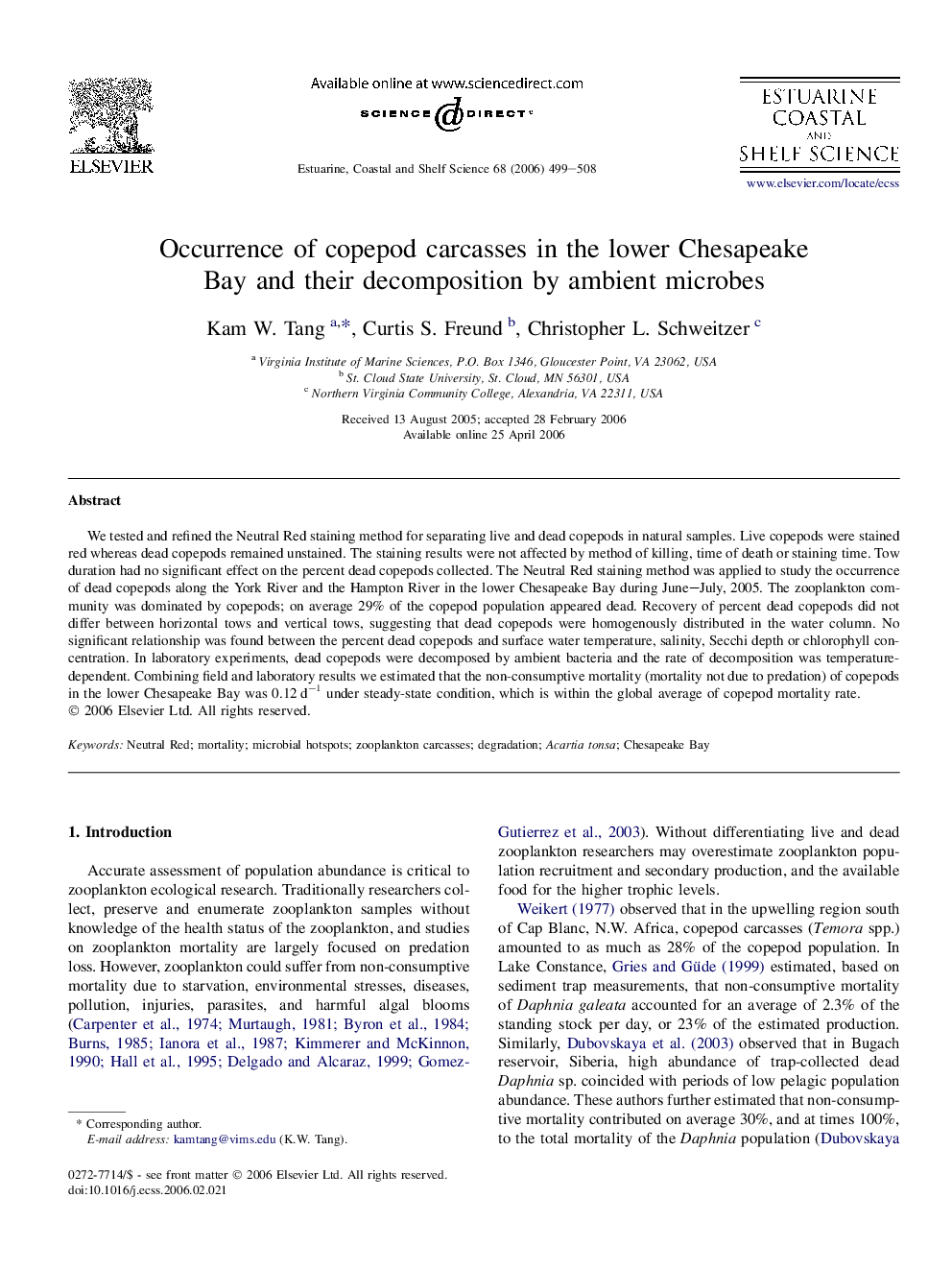| Article ID | Journal | Published Year | Pages | File Type |
|---|---|---|---|---|
| 4542500 | Estuarine, Coastal and Shelf Science | 2006 | 10 Pages |
We tested and refined the Neutral Red staining method for separating live and dead copepods in natural samples. Live copepods were stained red whereas dead copepods remained unstained. The staining results were not affected by method of killing, time of death or staining time. Tow duration had no significant effect on the percent dead copepods collected. The Neutral Red staining method was applied to study the occurrence of dead copepods along the York River and the Hampton River in the lower Chesapeake Bay during June–July, 2005. The zooplankton community was dominated by copepods; on average 29% of the copepod population appeared dead. Recovery of percent dead copepods did not differ between horizontal tows and vertical tows, suggesting that dead copepods were homogenously distributed in the water column. No significant relationship was found between the percent dead copepods and surface water temperature, salinity, Secchi depth or chlorophyll concentration. In laboratory experiments, dead copepods were decomposed by ambient bacteria and the rate of decomposition was temperature-dependent. Combining field and laboratory results we estimated that the non-consumptive mortality (mortality not due to predation) of copepods in the lower Chesapeake Bay was 0.12 d−1 under steady-state condition, which is within the global average of copepod mortality rate.
